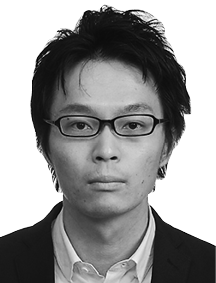[ⅲ]Information and Control Systems for Energy Industry
Hitachi supplies cloud-based DX solutions for O&M and staff training that enable electricity generators to adopt advanced preventive maintenance practices. Specifically, these cover the rationalization of equipment inspection frequencies, assessing the extent of equipment aging, and the formalization of workplace expertise. The energy business has experienced major changes over recent years, including electricity market liberalization, the legal unbundling of the transmission and distribution sector, and the acceleration of decarbonization. Along with the need to manage their businesses more efficiently, these changes mean that O&M efficiency improvement and human capital development (maintaining work quality and passing on knowledge) are important issues of concern for electricity generators. This article describes solutions for overcoming these challenges facing electricity generators.





The conditions under which the energy industry operates have changed significantly over recent years. An overall plan for electricity reform was put forward in 2013 in the form of a three-stage process of expanding cross-regional grid operation, full liberalization of both electricity generation and retailing, and reinforcing the neutrality of transmission and distribution through a process of legal separation. To date, this has led to the establishment of the Organization for Cross-regional Coordination of Transmission Operators (2015), full liberalization of the electricity market (2016), and legal unbundling of the transmission and distribution sector (2020). As a result, the competitive environment for electricity generators is now very different from what it was before.
Meanwhile, calls for action on reducing the load on the environment have included the question of how to reduce greenhouse gas emissions, the key topic discussed at the 21st and 22nd Conference of the Parties to the United Nations Framework Convention on Climate Change (COP21 and COP22) held in 2015 and 2016, respectively. Alongside this, Japan in the fall of 2020 announced its commitment to achieving carbon neutrality by 2050. These developments are making it more important than ever that electricity generators, too, take steps toward decarbonization.
At this point in the process, with a variety of reforms still in progress, both the former general electricity utilities and independent power producers (IPPs) are being called on to invest in improving their environmental performance while also managing their businesses more efficiently and maintaining security of supply. Achieving this requires more efficient operation and maintenance (O&M) of power generation plants, with a need to address such challenges as the ongoing aging of infrastructure and the difficulty of recruiting and training staff, both issues that are expected to persist into the future(1).
Meanwhile, remarkable advances have taken place over recent years in digital technologies such as artificial intelligence (AI) and the Internet of Things (IoT), with recognition of the importance of digital transformation (DX) in which these technologies and data are utilized for innovation in products, services, processes, and business models(2).
Hitachi believes that it is well placed to use DX to resolve the challenges facing electricity generators, and is looking at supplying cloud-based DX solutions that utilize these digital technologies together with a wide variety of data on the electricity business to rationalize equipment inspection frequencies, assess the extent of equipment aging, and formalize workplace expertise(3). The following sections describe these solutions.
Figure 1 shows an overview of the cloud-based DX solutions for O&M and staff training that Hitachi is looking to supply to electricity generators.
Most past solutions for electricity generators have been hosted at the customer site (on-premises) and have suffered from problems such as a high up-front cost of adoption and their inability to provide centralized management of O&M data and workplace knowledge due to the closed architecture of individual systems. Overcoming the challenges for electricity generators discussed above will require the appropriate management of data on business operations and ongoing improvements to business processes, including the rationalization of inspection frequencies, assessment of the extent of equipment aging, and formalization of workplace expertise based on evidence derived from collected data. Also needed are ways of making solutions available to electricity generators that deliver ongoing value while keeping their up-front investment small. Accordingly, Hitachi is looking at using a cloud platform to deliver solutions that support O&M and staff training at electricity generators. The main elements are as follows:
The first step is to utilize co-creation for BPR (1) to work with customers on visualizing business processes and identifying challenges through on-site survey and so on. Hitachi then identifies the mix of solutions from (2) to (6) that will address these challenges and provides support for their implementation. These solutions are used to collect and store data on plant operation and maintenance as well as workplace expertise, and, based on the insights obtained from this data, to make improvements to O&M practice. Being cloud-based, they are easier to access and allow for remote work.
Figure 1 — Overview of Cloud-based DX Solutions Hitachi uses co-creation for BPR to identify the specific issues based on an on-site survey and to provide support for the adoption of appropriate solutions, with both legacy solutions and DX solutions being delivered via the cloud.
Hitachi uses co-creation for BPR to identify the specific issues based on an on-site survey and to provide support for the adoption of appropriate solutions, with both legacy solutions and DX solutions being delivered via the cloud.
This section goes into detail about two of the solutions: use of co-creation for BPR and the LXP.
Hitachi’s use of co-creation for BPR targets O&M for power generation plants in particular, offering consultancy services on how to clarify business processes, identify the issues, and make improvements. This provides the groundwork for adopting cloud-based DX solutions. Working in such an environment calls for specialist expertise in areas like site safety rules and plant design. Hitachi has O&M knowledge and extensive experience with a wide range of plant equipment that it can call upon to provide consultancy services on business process improvement to electricity generators.
The following describes how the investigation process of this service is carried out. BPR can be broadly divided into five steps spanning three phases.
Figure 2 — LXP Overview The LXP solution supports knowledge transfer and digitalization in O&M activities based on a concept of retaining, consolidating, and deploying knowledge.
The LXP solution supports knowledge transfer and digitalization in O&M activities based on a concept of retaining, consolidating, and deploying knowledge.
The LXP solution supports knowledge transfer and digitalization in O&M activities based on a concept of retaining, consolidating, and deploying knowledge (see Figure 2).
The LXP is made up of knowledge identification together with separate functions for knowledge retention, consolidation, and deployment. The solution is targeted at electricity generators, with the first step being to build up a portfolio of O&M expertise for power generation plants by using on-site surveys and the analysis of working practices undertaken with the assistance of experienced employees. Tacit knowledge is identified and formalized in the form of a knowledge list.
Here, “retention” refers to the provision of online learning for O&M expertise. Training material is produced based on the knowledge list and delivered by means of an online learning environment. This training material mainly takes the form of videos, animations, and slideshows (see Figure 3).
The videos help convey a sense of the enthusiasm and reality of the person passing on the knowledge while the animations can express a large amount of information in ways that are easy to understand. Similarly, the slideshows make it easy to rearrange the material being provided and to present the explanations and relevant forms in context. By selecting training material that is appropriate to the knowledge being conveyed, new recruits and young staff can acquire knowledge from their experienced colleagues on the basis of what is needed. This “retention” function makes training more efficient, improving the work quality of less experienced staff.
“Consolidation” provides infrastructure for structured knowledge management. It involves defining the structure of the information resources used by experienced staff in the conduct of their work and how it relates to equipment, making this information available in a form that is cross-referenced with plant drawings and other such documents. The large quantity of power generation plant documentation means that finding the required information can be time-consuming. The “consolidation” function overcomes this problem, giving staff access to the information they need from the same perspective and point of view as experienced staff. In particular, it can shorten the time taken to recover from loss accidents by giving younger employees the ability to search for similar instances from the past and look back at how they were dealt with by experienced staff, thereby helping them to mount a quick response. This reduces variability in the response to such incidents, regardless of whether staff are experienced.
“Deployment” involves the digitalization of workflows and forms, also linking these to the knowledge identified above. This ensures that all staff, regardless of their level of work experience, can complete O&M work without missing any steps on the basis of standardized workflows and knowledge.
In these ways, the identification, retention, consolidation, and deployment of knowledge using the LXP can help to resolve challenges to the business sustainability of large electricity generators such as the former general electricity utilities, specifically through human capital development (improvements to work quality and skills transfer). Among the smaller players, on the other hand, as well as IPPs and other new entrants to the electricity generation market, it is highly likely that companies have yet to standardize their operations, having not yet built up their stocks of workplace knowledge. This likely serves as a barrier to entry. In response, Hitachi is looking into whether it can use its LXP cloud service as a means of supplying these smaller players and new entrants with expertise that has been supplied by the former general electricity utilities or the more generic know-how that Hitachi has acquired through its own work on system implementation. By paying for such expertise at a price commensurate with its value, the objective is for this to grow into a knowledge sharing service that represents a win-win proposition for both those who provide knowledge and those who receive it.
Figure 3 — Formats for “Retention” Online Training Resources The “retention” function of the LXP is used to produce training material based on identified knowledge and to provide an online learning environment. This training material mainly takes the form of videos, animations, and slideshows.
The “retention” function of the LXP is used to produce training material based on identified knowledge and to provide an online learning environment. This training material mainly takes the form of videos, animations, and slideshows.
The past practice of on-premises solution delivery tended to require a large up-front investment by electricity generators, with the pricing of the solution representing the base cost of putting it in place. However, because of the need for electricity generators to further improve the efficiency of their business, it is anticipated that in the future they will require solutions that can continue delivering value while keeping the up-front investment as low as possible. The cloud-based DX solution can be made available in such a way that customers can trial it on a small scale and only choose to keep using it if it looks likely to deliver benefits, using billing practices that are based on the value delivered to the customer such as usage-based pay-as-you-go arrangements or subscription models based on duration of use.
Meanwhile, along with receiving revenue for solution delivery, Hitachi is also looking to grow it into an ecosystem where new value is generated through use of the platform as a means of bringing stakeholders together. In the case of the LXP described above, the opportunities go beyond making expertise supplied by former general electricity utilities available to smaller players and new entrants for shared use on the platform, also including knowledge transfer at large operations, operational support for smaller ones, and assistance for new entrants to get themselves established. Under such arrangements, the providers of knowledge would earn revenue for doing so while the recipients would be able to put this knowledge to good use. The result is to establish an ecosystem where win-win relationships between stakeholders are intermediated by the platform.
This article has described cloud-based DX solutions for electricity generators that can overcome the key challenges of O&M efficiency and staff training (quality maintenance and knowledge transfer). These solutions have been realized through co-creation with electricity generators. In the future, Hitachi intends to continue addressing the needs of electricity generators as it creates solutions that can help to overcome challenges and enhance value.